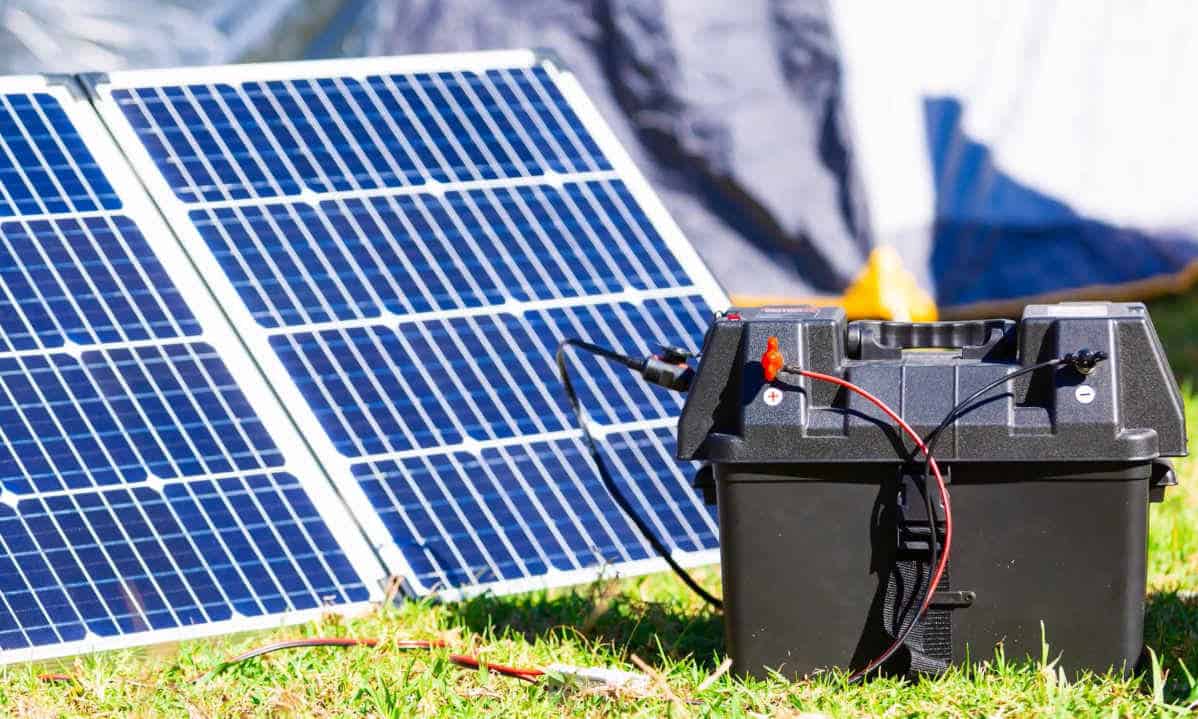
Deep Cycle Battery Guide
Contents
To power any devices or appliances that you plan on taking with you on an off-road trip or a few days camping, you’ll need a dedicated battery setup. This will be either a single battery, or as is more common, a dual battery setup, connected to a charger or solar panel. But what type of battery do you need? Considering the abundance of available options on the market, this guide will help to clear any confusion and a few common misconceptions.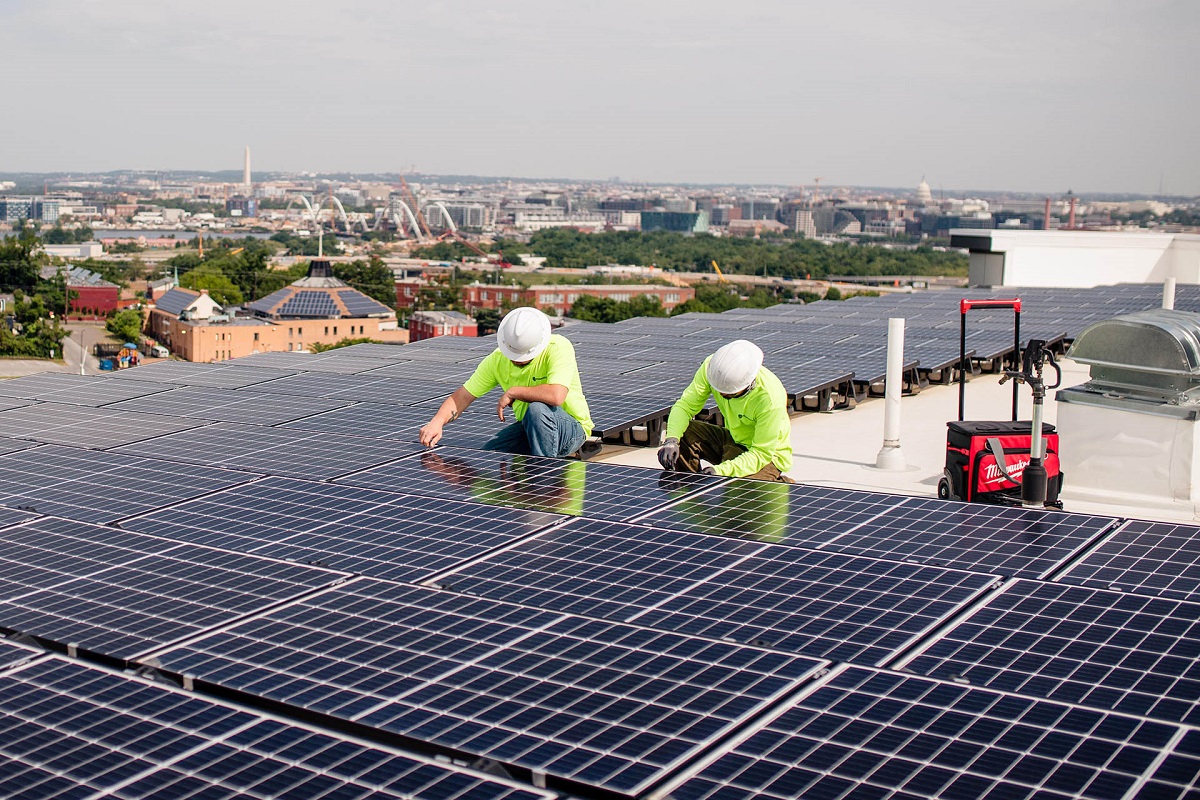
Solar setups need to consist of an auxiliary or second battery, that can be charged throughout the day by the available sunlight with a solar panel or panels in the appropriate output. The battery needs to have enough power to run basic items, like fridges and lights, and charge smaller devices like phones or computers. This means a slow, constant discharge. Batteries of this type are called deep cycle batteries.
Starter Batteries vs. Deep Cycle Batteries
The battery in your car used to start the motor provides for short bursts of high voltage. It may look identical to your deep cycle solar battery, but there are key differences. Besides the way they are charged and discharged, there’s also the difference in construction. Starter batteries discharge only a small portion of their capacity and are recharged by the car’s alternator. Deep cycle batteries can be ‘deep cycled’ or discharged up to 80 per cent multiple times without causing any damage or reducing the battery’s life cycle. In addition, starter batteries have numerous lead plates that provide for a larger surface area for the electrolyte to react and provide for a higher output. Deep cycle solar batteries, on the other hand, have fewer and thicker plates, meaning less surface area for electrolytes. This allows for a slower discharge rate. For this reason, starter batteries cannot be used to power devices in a solar setup, and most deep cycle batteries (dual batteries being an exception) don’t have the needed surge in power to start a car motor.
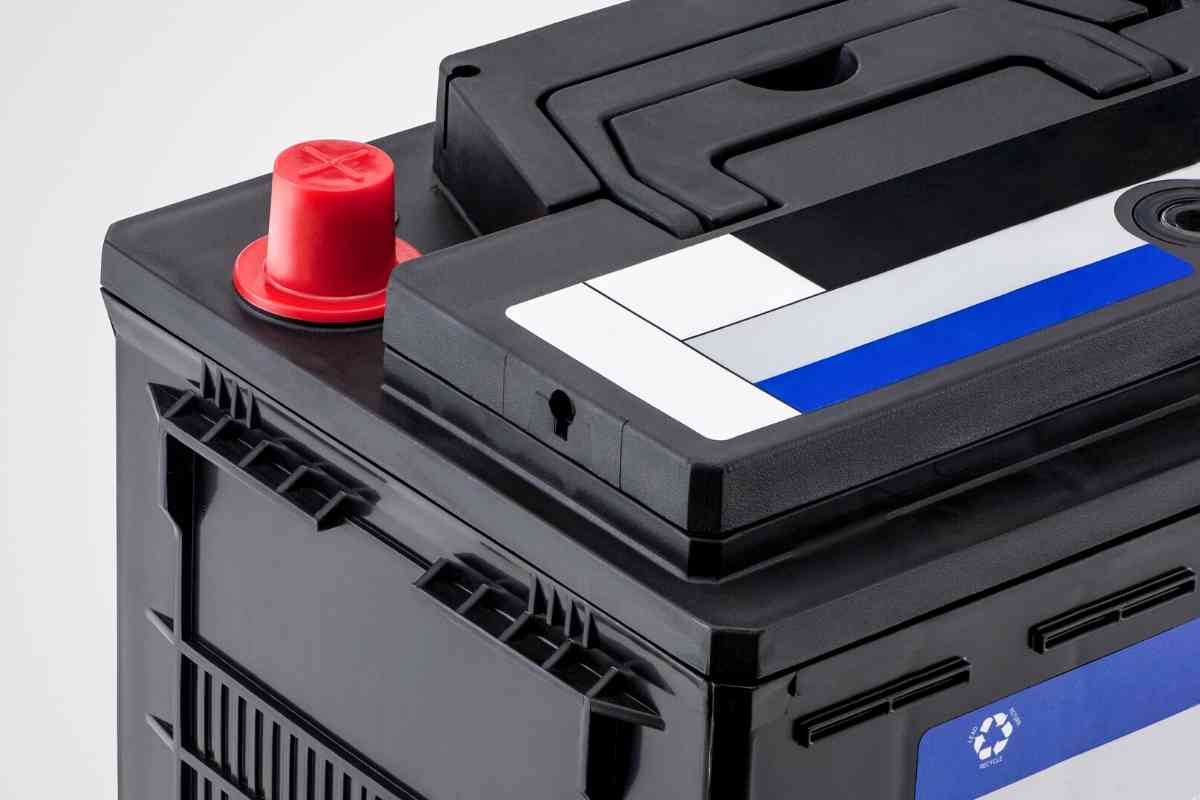
Types of Deep Cycle Solar Batteries
The basic types of deep cycle batteries sold today are lead-acid and lithium batteries. Lead-acid batteries are further divided into flooded cell and sealed lead batteries. There are two types of sealed batteries – AGM and gel cell batteries. With all the different types, let’s take a closer look at each:
Flooded Lead Acid
Flooded lead-acid batteries or FLAs are some of the oldest battery designs still used today. They consist of lead plates ‘flooded’ in an electrolyte mix of sulfuric acid and water. When charging or discharging, gasses escape, leading to a drop in electrolytes. This means caution in storage and more maintenance, and the reason why they are the cheapest type of deep cycle batteries around. FLAs can be discharged up to 50% capacity and have the shortest life cycles. One advantage is that they are reliable and can handle overcharging.
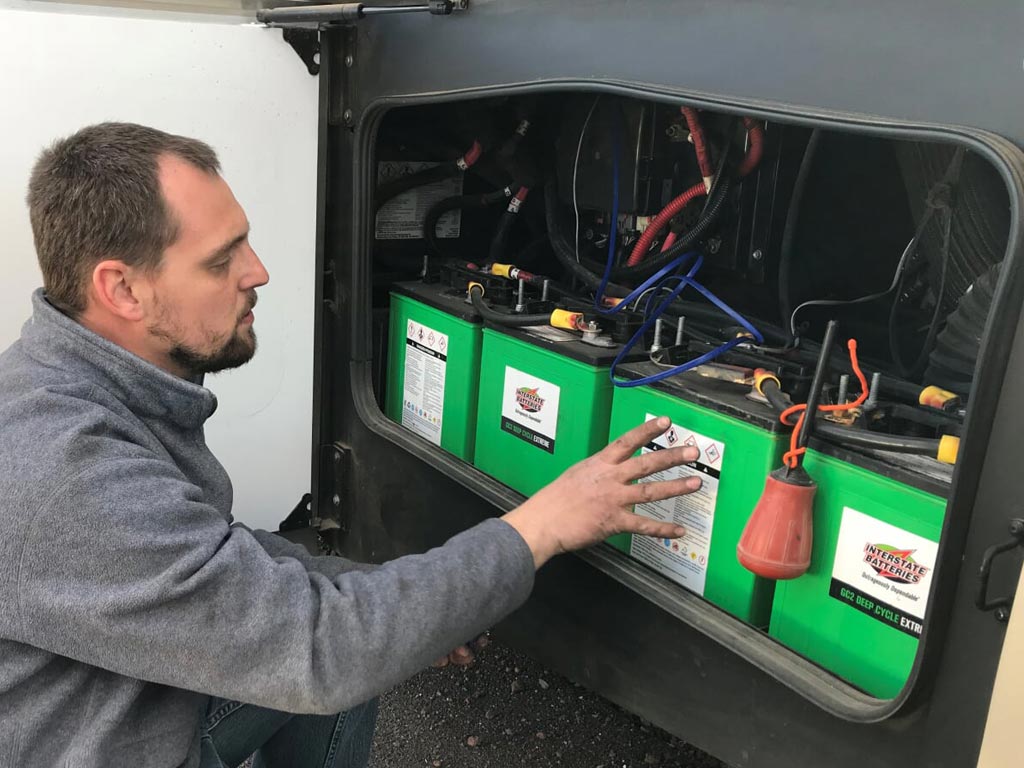
AGM/ Gel
These fall in the category of sealed lead-acid batteries. AGM or Absorbent Glass Mat batteries have lead plates divided by thin layers of fibreglass which help to absorb the electrolyte mixture. This makes them more efficient than FLA batteries, with up to 95% charge and 80% discharge rates. They also require less maintenance but are typically more expensive.
Gel deep cycle solar batteries have a sulfuric acid and water-electrolyte mix floating in a gel or silica compound. This means no leakage and less maintenance. They are however more efficient than both AGM or FLA batteries but need to be paired with a charger with a compatible charging profile.
Lithium
Lithium batteries are all the craze in off-grid batteries, with different mixtures of lithium salts leading to different deep cycle batteries. The most common are Lithium iron phosphate or LiFePO4. They are extremely lightweight, coming in at less than half the weight of all other batteries mentioned above, have the best discharge rates, pushing over 80 per cent, and can handle higher current during recharging, meaning they top up to full charge the fastest. They provide constant power until no charge is left. All these benefits do come at a cost. They are the most expensive deep cycle solar batteries in use today.
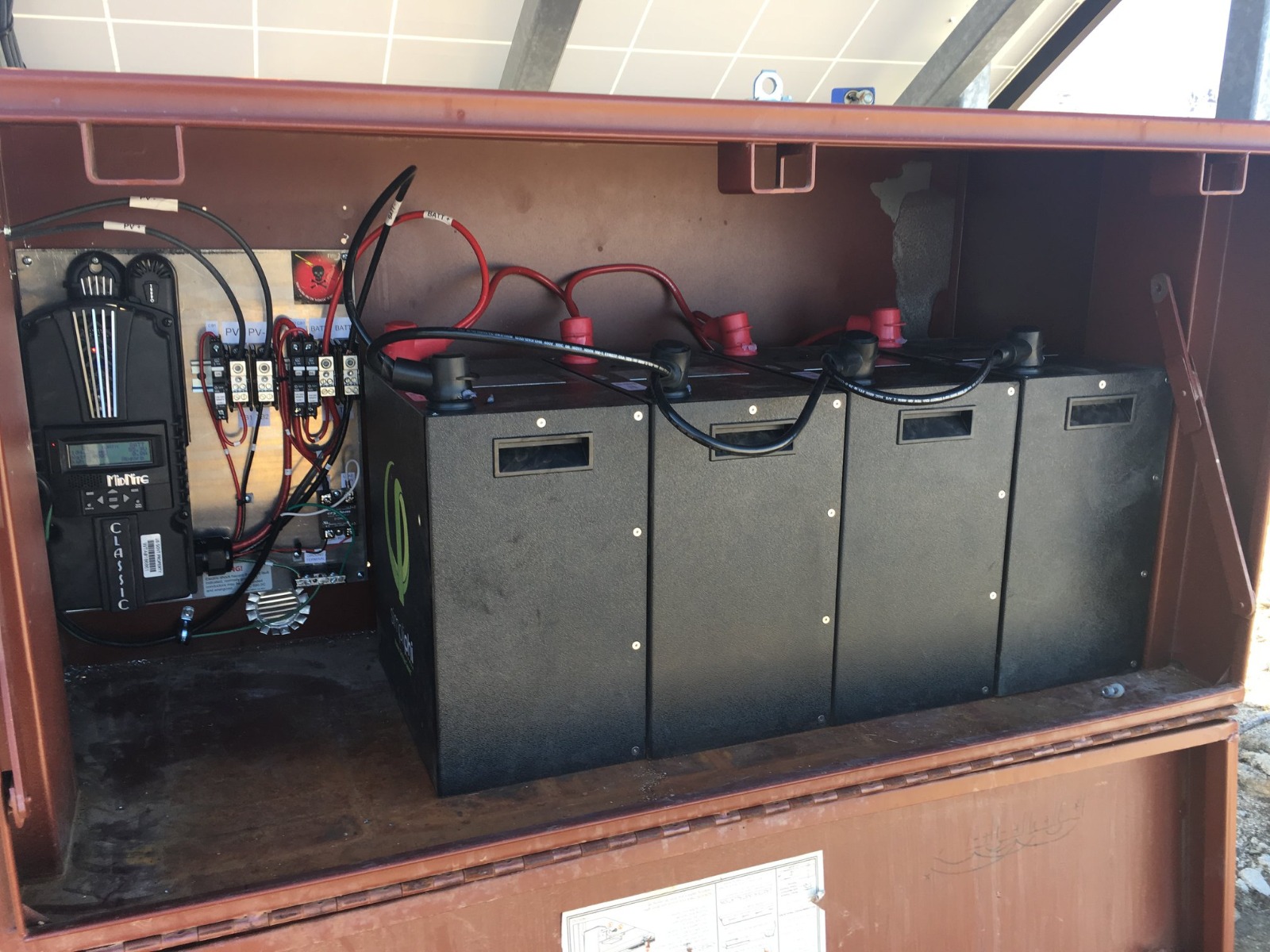
Which Battery is Right for You?
When choosing a deep cycle battery for your solar setup, there are a few things to take in mind:
- Capacity – The capacity in Amp-hours will vary from battery to battery. Here the larger the number means you can power more appliances and devices at the same time. Larger batteries are suited for motorhomes and campervans with things like aircons, fridges and stoves draining a lot of power. Capacity varies from 30Ah in the smallest batteries to 400Ah in the largest and most expensive batteries.
- Rated Cycles – cycles refer to the number your battery can be discharged, to the recommended rate, and recharged again. Lead batteries tend to have the shortest cycles, around 500. AGM and Gel batteries should last around 1000 cycles, meaning you won’t need a replacement in years to come. Lithium batteries have the highest rated cycles, up to 2000 in the most expensive variants. Factors like temperature, and under or overcharging significantly reduce rated life cycles, along with inappropriate maintenance.
- Price – Lithium batteries demand a premium, but last longest and provide the best features in terms of power delivery and charging. These can cost upwards of a thousand dollars, so pair them with equipment of the same value. If you regularly go off-roading or camping, then this is an investment worth having. AGM and Gel batteries are the middle ground, offering a good balance between price and performance, and Lead-acid batteries are the cheapest and suitable for small-scale solar. Factor in the price of compatible charge controllers for each type.
What you ultimately choose depends on your budget and needs. For frequent camping, with numerous appliances go for a lithium battery with a high capacity. If you’re the occasional camper, with little need in the way of luxury; a cheap lead-acid battery might just be enough. You can find deep cycle solar batteries and other equipment in camping, 4WD and solar retailers, both online and in-store.


